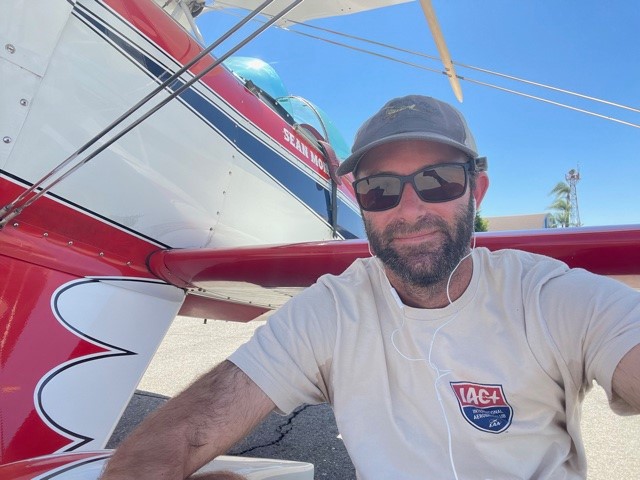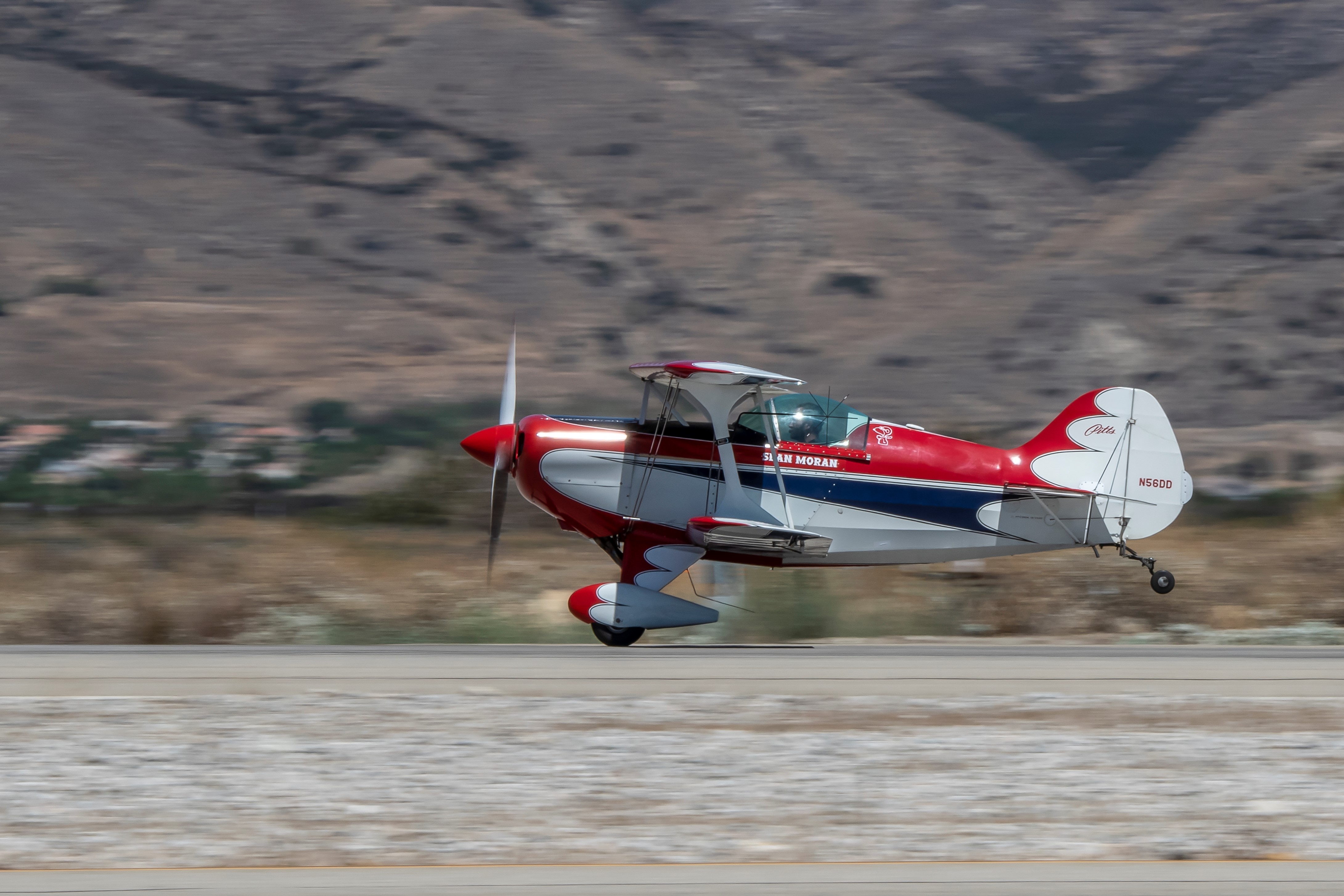By Zinnia Kilkenny, IAC 437244


ZK: Southern California’s Chapter 26 held the inaugural Redlands Aerobatic Cup this September; there were four competitors in your category. Bravo on three first-place flights in Primary, Highest Scoring Bi-plane, and a Grassroots Achievement. How did you prepare?
SM: Chapter 26’s inaugural Redlands Cup was a fantastic event. I can’t wait to see how it will grow with the 26 members at the helm of Southern California’s newest contest. The cards fell in my favor during this competition, and I was lucky to walk away with first place; there were so many talented pilots.
The initial preparation to fly Primary as a Redlands solo competitor started in February 2021 when I decided it was time to own an aerobatic airplane. Before purchase, I completed an Upset Prevention and Recovery course – and advanced spin training with Chris Olmsted in a Pitts S-2A. Olmsted Aviation is based out of Santa Paula Airport, which has one of the best aviation cultures in the USA.
After receiving instruction in Primary and Sportsman aerobatic maneuvers, Chris eventually helped me earn my Primary and Sportsman Achievement patches. He was also my safety pilot during Borrego Akrofest 2020.
That was my first competition with a safety pilot - and it was truly what gave me the spark to continue to become proficient in various levels of aerobatics.
ZK: Share with us the background of your newly acquired Pitts S-1S that brought you to aerobatic glory

SM: I decided it was time to own an aerobatic bi-plane, specifically a Pitts Special. The Pitts dominated the world aerobatic competition scene throughout the 1960s and 1970s. The aircraft I’m lucky enough to be the steward of is a 1974 Dan Dameo amateur home build S1-E.
I purchased the plane from Eric Moore after learning he planned to move up to Intermediate and wanted a “higher-performing” monoplane. Having learned that bi-planes are more superior in looks and feel than a monoplane, I decided to contact Eric, who told me he wanted the Pitts to continue in competitions. I was looking for a well-maintained bi-plane, so it was love at first sight.
ZK: When did you receive the visceral call to aerobatics?
SM: When I started learning how to fly Primary maneuvers in a competition aerobatic box. The level of focus and skill it takes to overcome certain aerobatic maneuvers, both mentally and physically, is something I enjoy! The five-category structure is a great way to make sure a pilot is proficient in aerobatic maneuvers before flying more challenging figures in higher-level categories.
ZK: What will be your legacy? How will you continue to help others?
SM: I look forward to growing my aerobatic skills by receiving additional ground coaching, keeping my airplane well maintained, and moving up to a higher level category someday.
I’m a CFI - and would like to become an UPRT instructor teaching pilots this amazingly underappreciated skill; byeither working for a school - or seeing how there are minimal options in So Cal (Orange County), I’d consider running an UPRT program as I gain more experience and continue improving my aerobatic skills.
The value and skills learned while doing upset recovery or aerobatics have been the greatest tool in my pilot toolbox. I plan to use these tools during my upcoming competition in the powered Primary and glider Sportsman Category at the Nationals Championships in Salina, Kansas.

ZK: Since the start of this interview, Sean has competed in his first National Championship. We congratulate Sean on a triumphant Nationals placing second in Primary power and first in glider Sportsman. We look forward to following his continued success.
Sean Moran, IAC 437244
Occupation: Advocate For The Elderly at Moran Elder Law
IAC Chapter: 36

